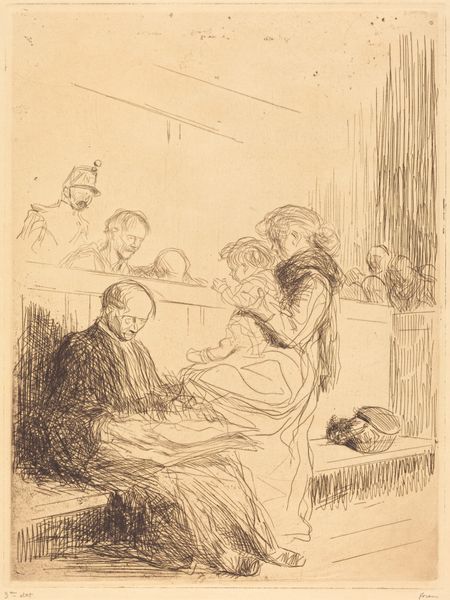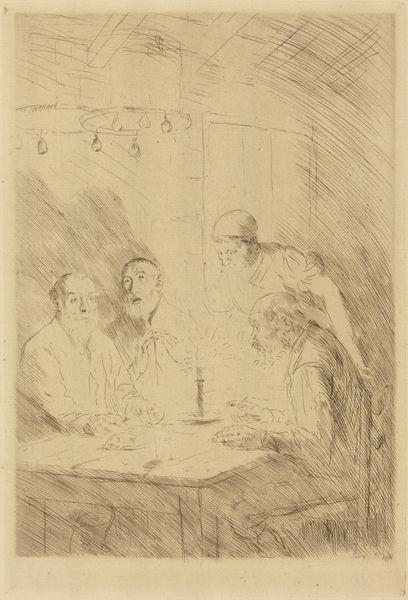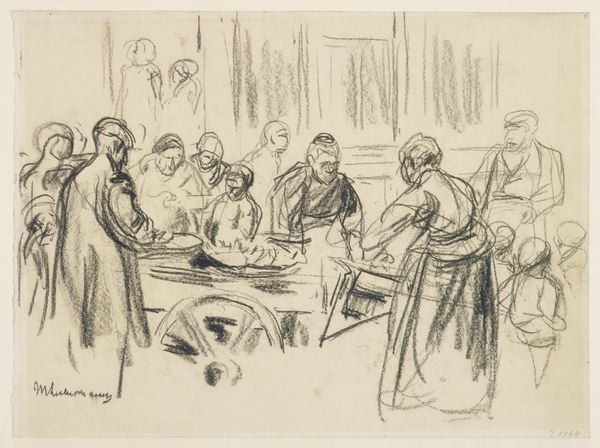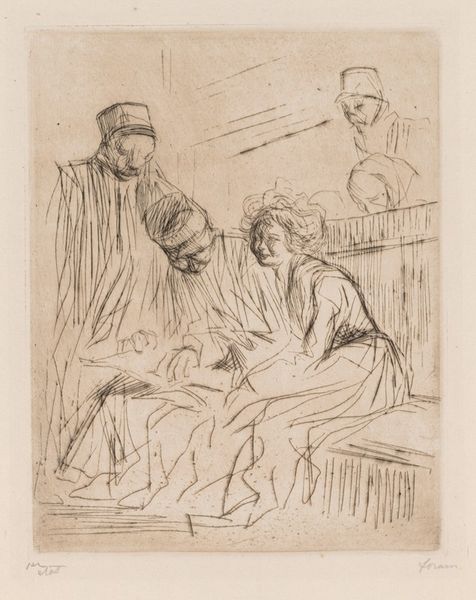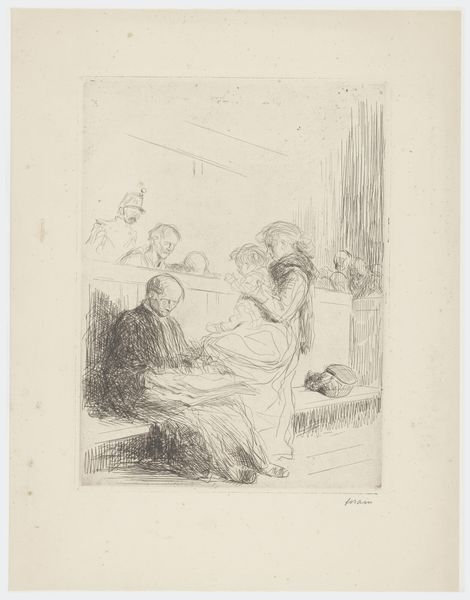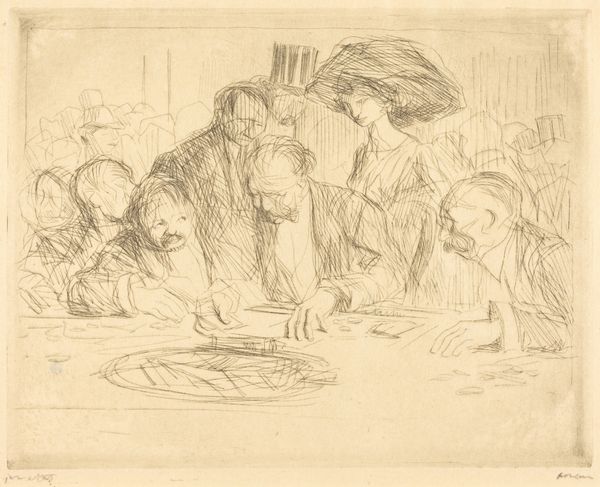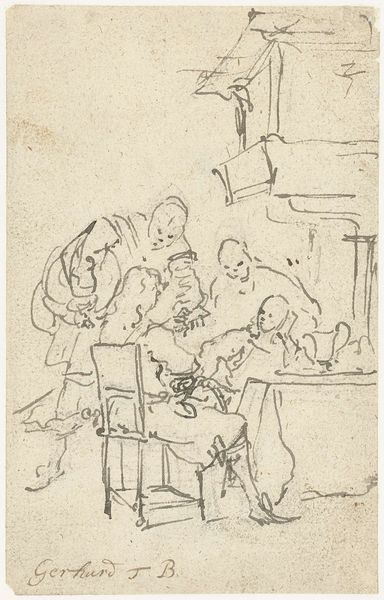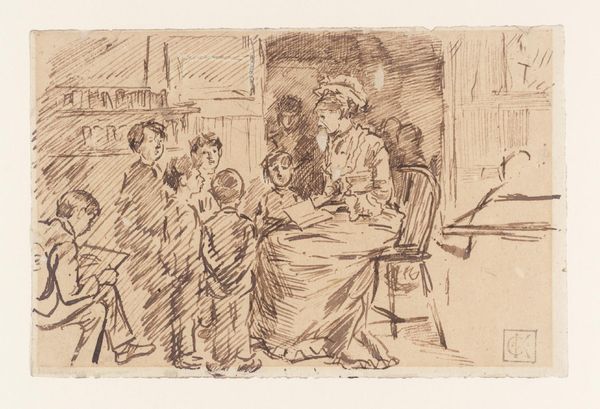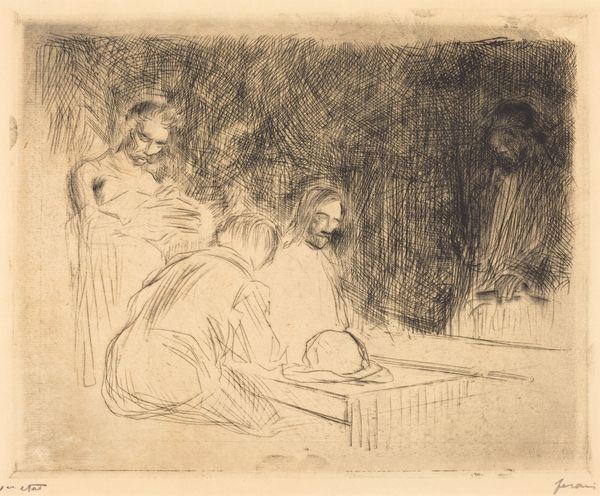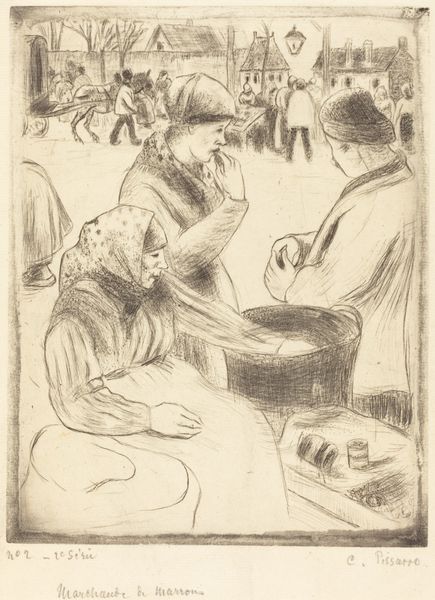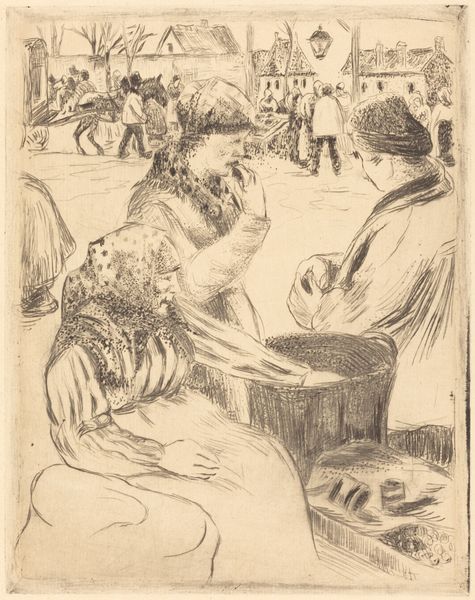
Copyright: National Gallery of Art: CC0 1.0
Curator: This is Jean-Louis Forain’s etching, "The Prisoner and the Child," from 1909. It’s rendered in a rather sparse, sketch-like style. What stands out to you? Editor: The palpable atmosphere. There's a somber, unsettling feeling created by the rapid, almost frantic lines. You can almost feel the scratch of the etching needle. Curator: Absolutely. The image depicts a prisoner sitting in what appears to be a courtroom or holding cell, while a woman holds up a child for him to see. Forain was deeply interested in portraying scenes of social realism and modern life, capturing the emotions of his subjects. Note how the eyes are central for each figure. Editor: The material realities strike me as poignant here. Think about the zinc or copper plate itself—scarred and worked over, much like the lives represented. Etching, a relatively accessible printmaking method, made it possible to circulate these images widely, influencing public opinion on poverty, law, and social structures. And consider Forain's labor, physically pressing into the metal. Curator: It does feel immediate and raw. The composition is deliberate in highlighting emotional relationships. Forain used images, frequently of downtrodden mothers and children, to generate very strong emotional reactions that bypassed political discourse, which can be a dangerous shortcut for real change. Do you think his images are effective or manipulative? Editor: Well, art's always both, isn't it? It's potent, this focus on vulnerable subjects reproduced through accessible, laborious means. I'm just wary of artists who romanticize and profit from subjects like prisoners, mothers and children. Did the printing process translate into better lives for any of these sitters? Probably not. Curator: That said, Forain offers an interesting, perhaps disturbing, meditation on redemption through familial ties and the universal suffering inherent in human existence. We cannot divorce it from it's own production of course, nor deny it's potential manipulative undertones. Editor: True, considering this work has deepened my awareness of the relationship between art making and social justice. It’s made me reflect on how accessible modes of creation impact visibility and perpetuate meaning, intentionally or not.
Comments
No comments
Be the first to comment and join the conversation on the ultimate creative platform.
